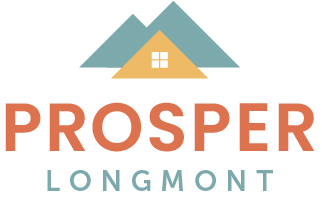By Edwina Salazar
The dream of a home lives in all of us; the desire for a safe place, a house where we can be ourselves, and where living happens. But obtaining secure housing and making Longmont home has been increasingly difficult for so many in our community.
The most crucial expense for anyone is housing. Often taken for granted, a roof and four walls instill people with a sense of stability which allows folks to turn their attention to the priorities of living, such as employment, health, and education. When housing is insecure or cost-burdened, when too much of a paycheck goes to rent, basics like food or medicine go unfulfilled. People become overwhelmed and less able to fully engage with the community. Families become vulnerable to homelessness. Living becomes stressful and health is compromised.
Our community, like most in our country, struggles to provide equitable housing and home ownership for all people. Often, scarcity in the housing market disproportionately impacts people of color. The city of Longmont’s 2018 Consolidated Plan’s Needs Assessment focused on populations most likely to face housing challenges. The Needs Assessment noted that Hispanic households are more likely to face housing problems than other residents, as do large households and single persons. In addition, people at the lowest end of the income spectrum most acutely feel the impact of the affordable housing crisis. It has become increasingly difficult for hardworking, lower-wage people to remain in our community.
As a 30-year resident, I know Longmont as a vibrant place with heart. I experience firsthand the city of Longmont’s commitment to providing services and resources equitably to all community members. Longmont strives to be a healthy community. But recognize that this commitment is aspirational, and we, as residents, need to be involved in advancing this commitment. Thus, I support the efforts of Prosper Longmont, led by Eric Wallace of Left Hand Brewery, which advocates for attainable housing, home ownership for residents in the 80-120% area median Income. This group of residents represents a large proportion of workers in Longmont, including people of color who have worked hard to advance economically and want the opportunity to achieve financial stability and grow wealth by owning a house. Still, the city’s efforts to increase rental housing, as a measure to improve the stability of lower-income groups, must continue.
I believe much of what Prosper Longmont advocates will help all in need of attainable and affordable housing. Hopeful ideas are: Provide innovative solutions to lending practices; address the dwindling land supply; and improve the viability of RTD through increased density of housing. Our community must grapple with the need to increase housing density through the development of quality, aesthetic multifamily housing for diverse folks of all income levels. To me, one of the most promising aspects of Prosper Longmont is the convergence of Longmont businesses pledged to improve housing diversity. The involvement of the business sector, collaborating and partnering with local government to solve community problems that impact their workers, is ideal to create sustainable solutions. As Prosper Longmont’s plan asserts, the responses required to ameliorate Longmont’s affordable/attainable housing issues need to be as comprehensive and wide ranging as the problem.
Here is what we have to gain as a community by accelerating efforts to develop affordable rental housing as well as improved access to home ownership: stability for all families, and lower risk of homelessness for vulnerable families; families’ resources going to important household needs and the ability to save for the future; stable environments for children, contributing to improved educational outcomes; improved health by providing stability; and better access to mass transit that helps low-income residents save money, access better jobs, improve health and reach critical community services. Additionally, affordable/attainable housing contributes to significant economic impacts such as increases in local purchasing power, job creation, and new tax revenues. Affordable housing has been shown to have a neutral or positive effect on surrounding property values.
As a community, if we back affordable/attainable housing, we, in turn, support the people inside the houses for whom these structures are more than just a roof and four walls. Houses are homes where life happens, and where folks prosper and realize their dreams.
Edwina Salazar, MSW, is a retired nonprofit executive director and 30-year Longmont resident.

